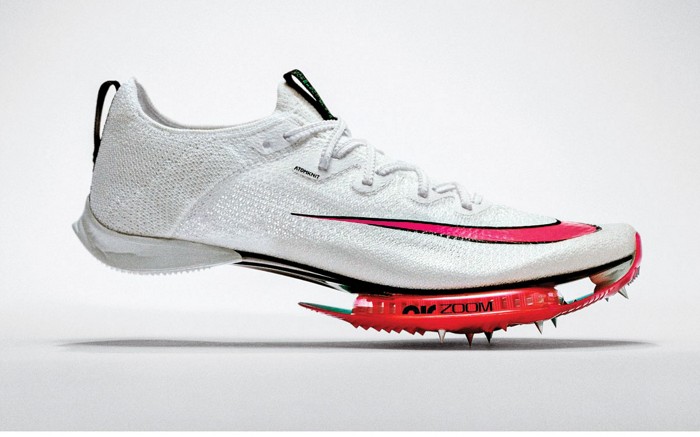Advertisement
Grab your lab coat. Let's get started
Welcome!
Welcome!
Create an account below to get 6 C&EN articles per month, receive newsletters and more - all free.
It seems this is your first time logging in online. Please enter the following information to continue.
As an ACS member you automatically get access to this site. All we need is few more details to create your reading experience.
Not you? Sign in with a different account.
Not you? Sign in with a different account.
ERROR 1
ERROR 1
ERROR 2
ERROR 2
ERROR 2
ERROR 2
ERROR 2
Password and Confirm password must match.
If you have an ACS member number, please enter it here so we can link this account to your membership. (optional)
ERROR 2
ACS values your privacy. By submitting your information, you are gaining access to C&EN and subscribing to our weekly newsletter. We use the information you provide to make your reading experience better, and we will never sell your data to third party members.
Materials
Newscripts
Technology triumphs in track and synthetic skin reveals robot boo-boos
by Alex Scott
July 31, 2021
| A version of this story appeared in
Volume 99, Issue 28
New tech for the Olympics

When some Olympic athletes benefit from developments in materials science, it can kick up a heap of controversy, as it leads some to question if this gives an advantage to athletes who have enough money or sponsors to afford the new technology. Think Australian sprinter Cathy Freeman in 2000 wearing her air-parting polyurethane-coated hooded bodysuit, US swimmer Michael Phelps and others in 2008 who wore go-faster polyurethane shark skin–patterned swimsuits and collected 98% of the indoor swimming medals, and all three male marathon medalists in 2016 who wore Nike Vaporfly 4% road-running shoes featuring a carbon-fiber plated sole that cut the metabolic energy they expended by 4%.
This summer’s Tokyo Olympics promises to be no different. This Newscriptster’s hunch is that the latest tech leap will involve novel designs and materials for track shoes with spikes on the bottom.
Until now spikes were designed to be light, to provide grip, and to return some of the energy expended by the runner. Recent innovations by shoe manufacturers of so-called super spikes include a compliant midsole foam such as that made of a thermoplastic elastomer polyether block amide. This can return more than 85% of energy expended compared with less than 70% for conventional ethylene vinyl acetate foams. Super spikes also feature a spike plate made from materials such as carbon fiber that may decrease the amount of energy lost at the joint that connects the toes to the foot.
The recent introduction of super spikes in track racing has been followed by a wave of world record–breaking times and top performances. While it appears that super spikes make athletes faster, measuring the spikes’ impact on speed and endurance is devilishly difficult, according to research from Laura Healey, Montgomery Bertschy, and colleagues from the University of Massachusetts Amherst. Their recent preprint, which hasn’t been peer reviewed, asks if it’s possible to quantify the benefits of super spikes (SportsRxiv 2021, DOI: 10.31236/osf.io/568ra).
The aerobic energy expended by an athlete running a marathon can be accurately measured and used to compare the effect of standard running shoes. However, in shorter races, the runners also use anaerobic energy, which is harder to measure. Healey and Bertschy write that finding the answer will be akin to a marathon rather than a sprint: “The short answer to these questions is that we do not know, and that we might never know exactly.” In the meantime, get ready for some good old Olympic controversy. Super spike producers have entered what Healey and Bertschy call a “footwear arms race.”
Robots that bruise

Bruising or feeling pain when we get a bump or a scrape is the human body’s warning system that helps us avoid repeat injuries. Prosthetic limbs and robots don’t have our warning system, but they might one day feature bruisable artificial skin recently developed by scientists led by Wenlian Qiu from the Chinese University of Hong Kong (ACS Appl. Mater. Interfaces 2021, DOI: 10.1021/acsami.1c04911). Synthetic skin that bruises could enable owners of prosthetics and robots to identify impacts and take action to avoid future damage.
Qiu and colleagues created the bruisable artificial skin from a conductive organohydrogel that changes color under mechanical stress. Yellow spiropyran molecules within the gel spring open to form merocyanine molecules that have a bruise-like purple color in response to an impact or a scrape. The organohydrogel also shows a change in electrical signals in response to impact. The level of force required to break open the spiropyran molecules is the same as the amount of force that causes bruises in humans. The so-called ionic skin could be attached to exposed parts of a robot or prosthetic, Qiu suggests.
Previous attempts to create bruises in synthetic skin have resulted in instantaneous color change that can only be maintained when the sensor is in a deformed shape. The ionic skin developed by Qiu and colleagues preserves “bruises” for 2–5 h after impact.
Please send comments and suggestions to newscripts@acs.org.



Join the conversation
Contact the reporter
Submit a Letter to the Editor for publication
Engage with us on Twitter